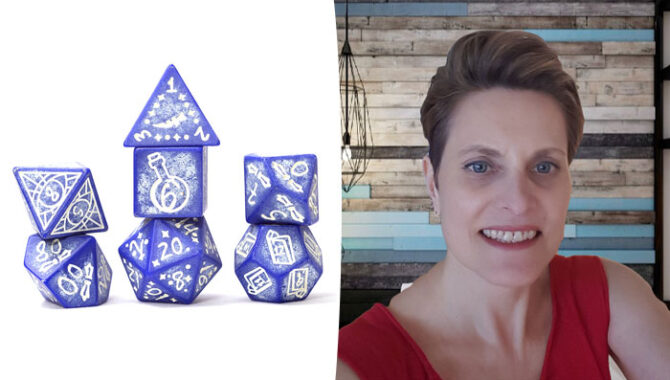—-
To stay in the loop with the latest features, news and interviews from the creative community around licensing, sign up to our weekly newsletter here

“Many companies bring dice to D&D, but we’re bringing D&D to dice”: Sirius Dice’s Tina Trenkler on designing dice that authentically nod to Hasbro’s classic game.
Tina, it’s great to tie-in. Before we dive in, for anyone new to Sirius Dice, how would you describe what you guys do?
We specialise in crafting beautiful dice sets and various accessories tailored for role-playing games enthusiasts. Beyond that, we’re dedicated to collaborating with hobby retailers, offering them merchandise that enhances their dice product sales. Supporting these retailers is integral to us as they serve as the backbone of the tabletop gaming community, often being the starting point for many players embarking on their first campaign adventures.
This year sees DUNGEONS & DRAGONS celebrate its 50th anniversary. What makes D&D an exciting IP to build product around?
For a dice company, D&D is the ideal IP. Play is done with dice and D&D fans love to display the tools of their trade. We feel so honoured that we have been chosen to represent such an integral part of the IP.

Dice is a category that I imagine doesn’t get the credit it deserves in terms of the quality and design-thinking that goes into your products. Can you tell us a little bit about how you authentically translated D&D into dice?
We like to say that many companies bring dice to D&D, but we’re bringing D&D to dice. What we mean by that is that it is easy to put a logo on D&D and call them D&D dice, but it’s important to understand how players use the dice.
“There is a consumer segment that is affectionately known as the ‘Dice Goblins’.”
We think of product design in two ways: the visual design and the composition of the product. For our non-licensed products, we try to find new dice manufacturing techniques and colour combinations that make the sets unique and appealing to our customers. For D&D, we want the dice to evoke the aspects of a character or gameplay.
We often start with the D&D IP and try to fill a gap or a desire by the player to reflect the circumstances of their campaigns. There are a number of products coming out this year that reflect this process much more than our first D&D release.

Yes, let’s dive into some of the range. The D&D Acererak’s Treasure Packs bring the ‘blind bag’ experience usually associated with toy collectibles into dice, with some sets out there rarer than others. It’s a really interesting idea! Why opt for this approach?
Much of the D&D game is about chance – the luck of the roll. Blind purchase gives that same excitement of the game within the buying experience. Both Sirius co-owner Lax Chandra and I come from a collectible gaming background, and we felt it was a natural fit for the D&D brand.
In addition, there is a consumer segment that is affectionately known as the “Dice Goblins”. These are people who love the beauty and uniqueness of dice. Many own hundreds of dice sets… So, this approach appeals to them as well.

Dice Goblins! Fantastic! I have one last question: Why do you feel D&D has continued to grow and thrive across the past 50 years?
The core of D&D is community – people uniting together for a common mission. It’s something that people have wanted to get back to and, we feel, has helped to drive the growth of D&D.
Enter your details to receive Brands Untapped updates & news.